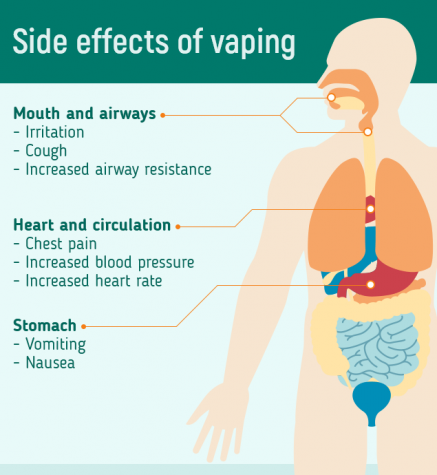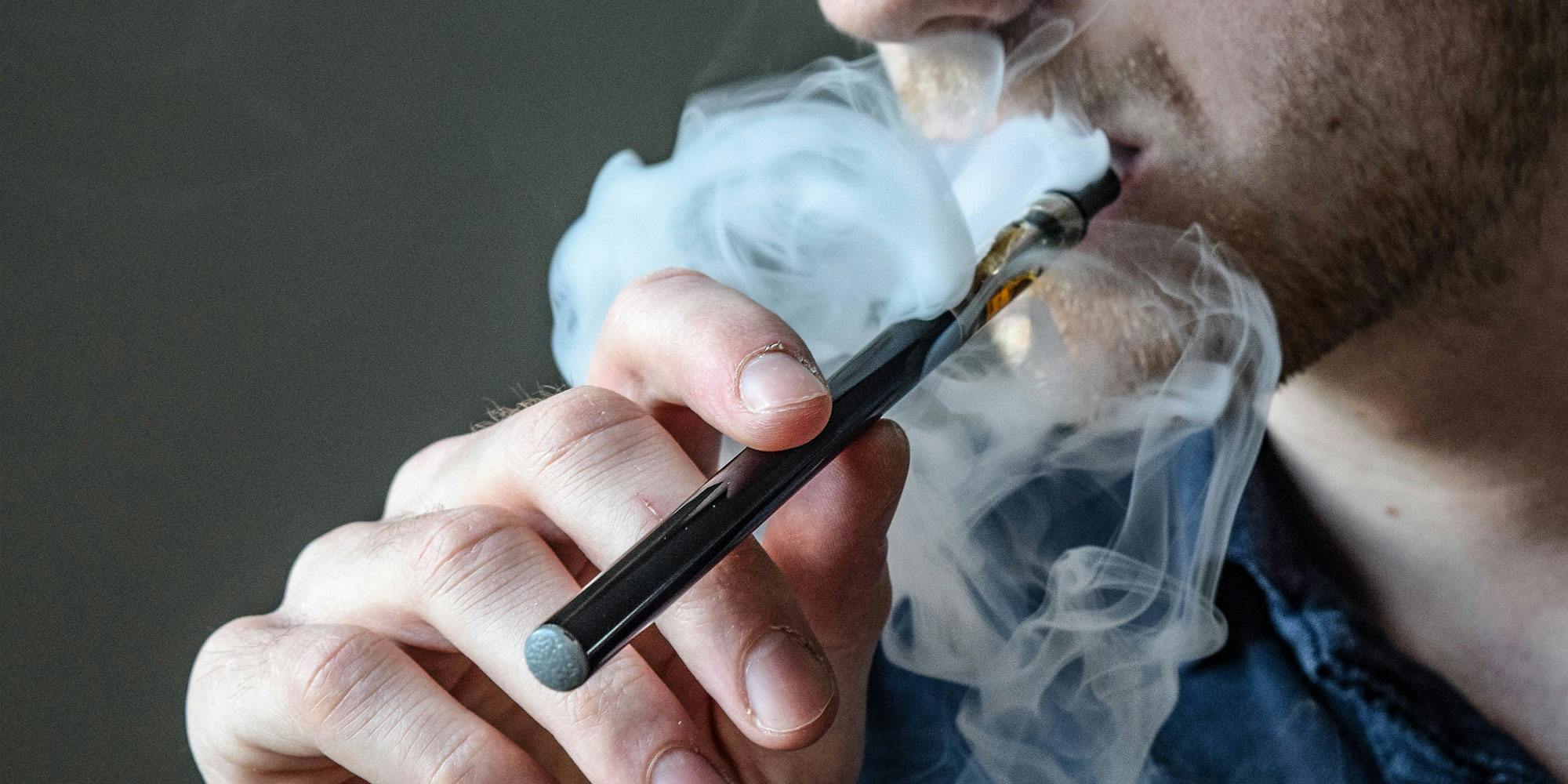
Is vaping as bad for Your Lungs as smoking cigarettes?
No. We must consider that few things in the world can be as bad for your lungs as smoking cigarettes. Most of the vapers you find out there will tell you the same thing when you ask how they started vaping: to quit cigarette addiction.
Does vaping decrease your lung capacity?
These findings are fantastic news for vapers who may still be concerned with the effect of vaping on lung function. The reasoning given by the researchers was that because vaping does not burn anything, the tar associated with most negative effects on lung function is virtually non-existent for vapers.
What effects does vaping have on your lungs?
Vaping caused classic Pneumonia infection. Vaping-related lipoid pneumonia is the aftereffect of breathing in slick substances found in e-fluid, which starts a fiery reaction in the lungs. Side effects of lipoid pneumonia include: Blood-Tinged mucus or coughing up blood. Shortness of breath.
What are the negative health effects of vaping?
The short-term side effects of using nicotine vapes are usually:
- Lingering aftertaste
- Light-headedness
- Sweating
- Headache
- Nausea and vomiting
- High blood pressure
- Increased heart rate

How many people have lung disease from e-cigarettes?
According to the CDC: Nearly 200 e-cigarette users have developed severe lung disease in 22 states (and the numbers keep rising — a Washington Post story put the number at 354). Most cases were among teens and young adults.
What are the symptoms of vapors?
Typically, symptoms have started gradually, with shortness of breath and/or chest pain before more severe breathing difficulty led to hospital admission.
What are the effects of smoking?
The recent tragic and alarming cases of severe lung disease are clearly cause for concern. A number of other health effects are also worrisome: 1 Nicotine is highly addictive and can affect the developing brain, potentially harming teens and young adults. Even some "nicotine-free" e-cigarettes have been found to contain nicotine. 2 Some substances found in e-cigarette vapor have been linked to an increased risk of cancer. 3 Teens who vape are more likely to begin smoking cigarettes. 4 Explosions and burns have been reported with e-cigarettes while recharging the devices, due to defective batteries. 5 Accidental exposure to liquid from e-cigarettes has caused acute nicotine poisoning in children and adults. 6 Vaping during pregnancy could harm a developing fetus.
What are the chemicals in e-cigarettes?
E-cigarettes produce a number of dangerous chemicals including acetaldehyde, acrolein, and formaldehyde. These aldehydes can cause lung disease, as well as cardiovascular (heart) disease. Electronic cigarettes, or e-cigarettes, put nicotine into your lungs and bloodstream.
How many puffs can you have with vaping?
With vaping, you can have one or two puffs, be satisfied, and be done whenever you want. You are not committed. You might only need one puff, then maybe five minutes later you take another one. You won’t overdo because your brain will never have to justify it as an expense if you stop now. You just stop now.
How much ohm is toxic?
It is likely that the super-heating of e-liquids that takes place in an RBA run at less than 1 oh m will create some toxic materials.
What is the e-cigarette called?
The Centers for Disease Control and Prevention has created a web page with the latest information and recommendations about what is now being called EVALI (for e-cigarette, or vaping, product use associated lung injury).
What is an end vape?
ENDS, also known as E-cigarettes and vaping devices, were originally developed as a replacement device for conventional tobacco cigarette smokers [1]. However, their success in the arena of smoking cessation has been very limited, and they remain unapproved as cessation tools due to a lack of data demonstrating efficacy relative to currently approved nicotine replacement therapies [2]. The aerosols produced by E-cigarettes are known to cause a variety of deleterious health effects, although more research and long-term studies are still needed [2]. E-devices have rapidly evolved since entering the international market in 2013, with vape pens, box mods, and pod-based devices being the most commonly used vaping devices in 2020 [3]. Although E-cigarettes are used in conjunction with conventional tobacco by many cigarette smokers (dual users), their sole use in young adults and adolescents has skyrocketed [4]. This is concerning as use of tobacco products had been declining worldwide for over 50 years, and now, a new generation of nicotine addicts is being created through these novel vaping devices through the use of appealing flavors and packaging [5]. Even more concerning is that children and teenagers who use E-cigarettes are more likely to smoke conventional tobacco [6].
What is the difference between evali and lipoid pneumonia?
a, bThe histologic distinction between exogenous lipoid pneumonia and electronic cigarette or vaping-associated lung injury (EVALI) is dramatic and distinctive. Exogenous lipoid pneumonia shows numerous lipid vacuoles a, most of which are much larger than individual cells. There is associated fibrosis in which many of the droplets are embedded. Occasional macrophages contain lipid droplets within their cytoplasm. However, the droplets are much larger and more variable (arrow) compared to EVALI, H&E, × 100. Larger lipid vacuoles are surrounded by several multinucleated giant cells and a foreign body giant cell reaction (arrowhead) b, a feature not seen in EVALI, H&E, × 200
Is vaping a lung disease?
Although lung diseases caused by vaping have been reported since the modern invention of the electronic cigarette , in the summer of 2019, patients began to present to health care centers at epidemic levels with an acute respiratory illness relating to vaping, which the Center for Disease Control termed E-cigarette or vaping product use-associated lung injury (EVALI). This review discusses electronic nicotine delivery systems as well as the etiology, clinical presentation, imaging findings, pathologic features, treatment, and long-term consequences of EVALI. We conclude with the practical impact EVALI has had on the practice of pathology.
Does lung biopsy show tungsten?
Interestingly, energy-dispersive X-ray spectroscopy on the actual tissue samples failed to reveal evidence of tungsten or cobalt.
Is vaping a respiratory disease?
In the summer of 2019, an acute, mysterious, and deadly respiratory illness related to vaping emerged, primarily in young patients, in the USA. Cases increased dramatically and peaked in late September 2019. The Center for Disease Control and Prevention (CDC) termed the disease causing this epidemic E-cigarette or vaping product use-associated lung injury (EVALI). Prior to EVALI, vaping had been associated with a variety of different pulmonary presentations ranging from lipoid pneumonia to diffuse alveolar hemorrhage, but at low numbers. In this review, we discuss electronic nicotine delivery systems (ENDS) as well as the etiology, clinical presentation, imaging findings, pathologic features, treatment, and long-term consequences of EVALI. We conclude with a discussion on the practical impact EVALI has had on the practice of pathology.
What is an electronic cigarette?
An electronic cigarette, or e-cigarette, is an electronic device that delivers nicotine through vapor instead of smoke.
Is aerosol mist water vapor?
Unfortunately, though, this aerosol mist is no harmless water vapor.
Do e-cigarettes burn tobacco?
While e-cigarettes do not burn tobacco, they still contain nicotine, perhaps even more amounts of nicotine than a traditional cigarette. So even if someone quits smoking and turns to e-cigarettes, they can still end up getting hooked on vaping.
Is vaping safer than smoking?
While vaping may seem like a harmless, safer alternative to smoking, research shows that’s not the case.
When will vaping peak?
Emergency department (ED) visits related to e-cigarette, or vaping, products continue to decline, after sharply increasing in August 2019 and peaking in September.
When is the next vaping hospital admission?
Dates of symptom onset and hospital admission for patients with lung injury associated with e-cigarette use, or vaping — United States, March 31, 2019–February 15, 2020. Numbers do not sum to 2,807 due to missing admission dates.
How many deaths from evali in 2020?
As of February 18, 2020, a total of 2,807 hospitalized EVALI cases or deaths have been reported to CDC from all 50 states, the District of Columbia, and two U.S. territories (Puerto Rico and U.S. Virgin Islands). Sixty-eight deaths have been confirmed in 29 states and the District of Columbia (as of February 18, 2020).
What is an e-cigarette?
Using an e-cigarette is commonly called vaping. E-cigarettes work by heating a liquid to produce an aerosol that users inhale into their lungs.
How to contact CDC about e-cigarettes?
If you have questions about CDC’s investigation into the lung injuries associated with use of e-cigarette, or vaping, products, contact CDC-INFO or call 1-800-232-4636.
Who monitors e-cigarettes?
CDC, the U.S. Food and Drug Administration (FDA), state and local health departments, and other clinical and public health partners are continuing to monitor e-cigarette, or vaping, product use-associated lung injury (EVALI).
Is vitamin E acetate linked to the eli outbreak?
Vitamin E acetate is strongly linked to the EVALI outbreak. Vitamin E acetate has been found in product samples tested by FDA and state laboratories and in patient lung fluid samples tested by CDC from geographically diverse states. Vitamin E acetate has not been found in the lung fluid of people that do not have EVALI.
